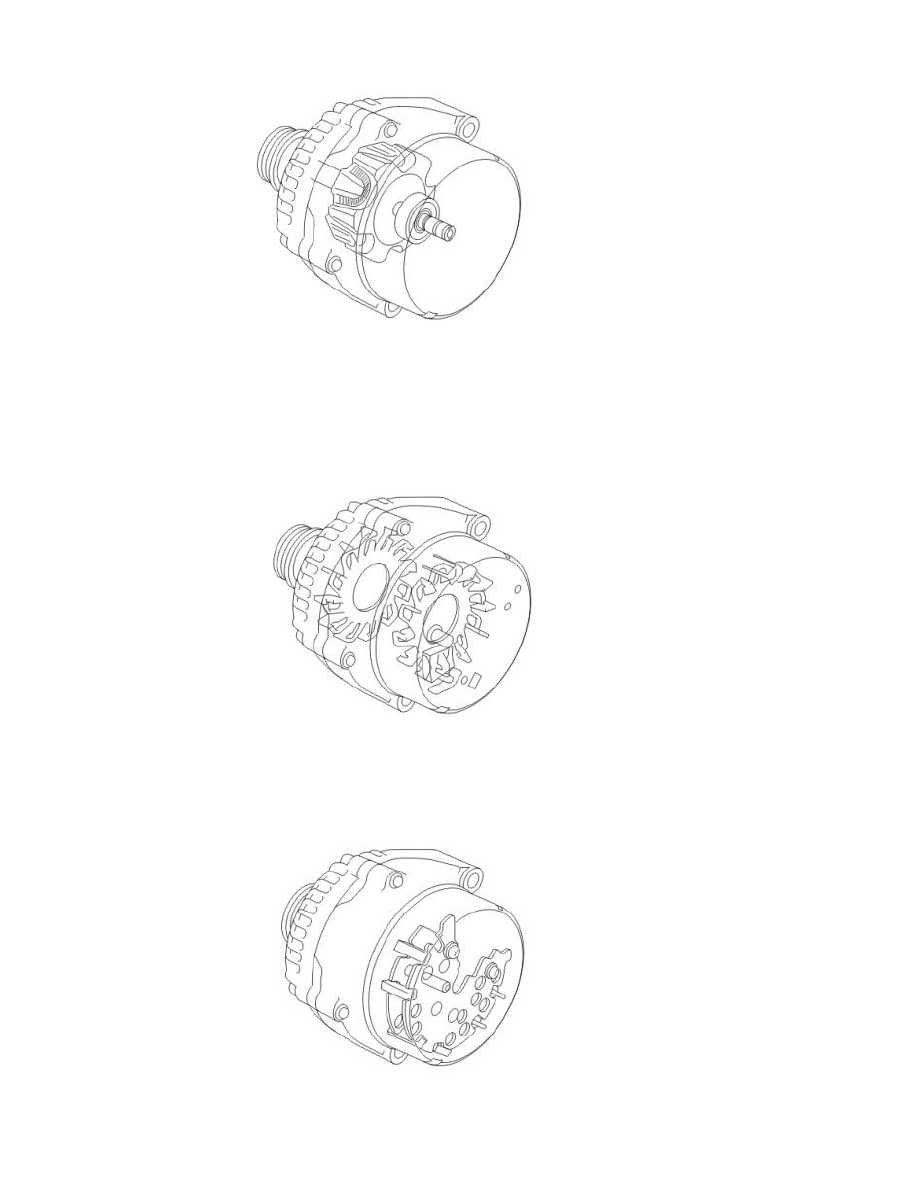XC90 AWD L5-2.5L Turbo VIN 59 B5254T2 (2005)

Rotor with slip rings
The rotor consists of two halves (claw-poles) which interlock. The halves are pressed onto the rotor shaft. There are twelve claws on the rotor, i.e. twelve
poles. One half consists of six north poles and the other half six south poles. The excitation winding is secured on the rotor shaft between the claw-pole
halves. The excitation winding (also known as rotor winding) consists of a circular coil surrounded by the claw-poles and connected to the slip rings. The
charge regulator supplies a magnetic current through carbon brushes positioned against the slip rings. The higher the current in the rotor the stronger the
magnet field of the rotor, and therefore the higher the current generated in the windings of the stator.
Cooling fans
The heat generated in the generator is, in principle, proportional to the current generated and must be directed away to prevent damage to the insulation
and diodes. The generator (GEN) is therefore air cooled and equipped with two integrated cooling fans on the rotor shaft.
Rectifier
Alternating current (AC) is created in the generator stator windings. This must be converted to direct current (DC) before it can be used in the electrical
system of the car. This conversion is made using a rectifier bridge which consists of six diodes, two diodes per phase winding.
The stator windings generate three phases and are delta connected An exciter diode is connected to each of the three stator windings. The six rectifier
